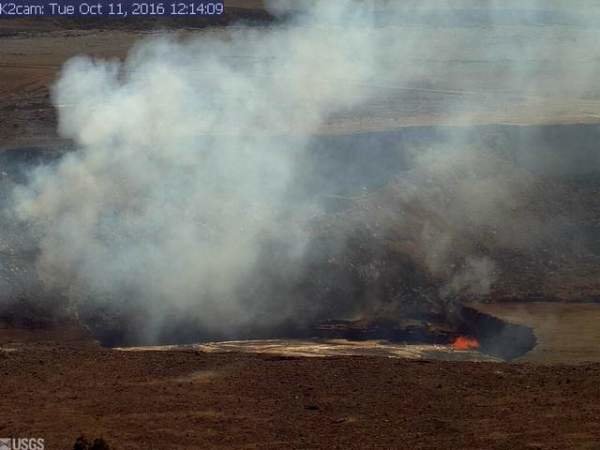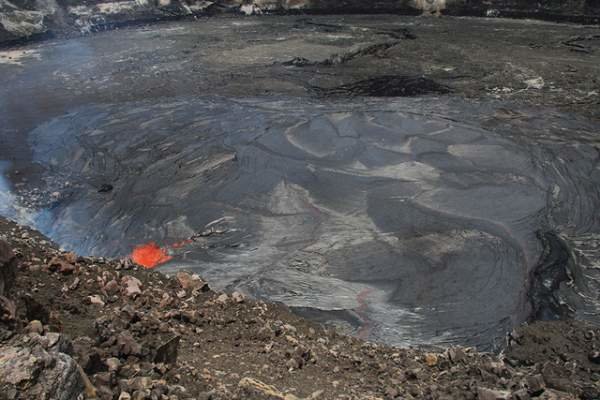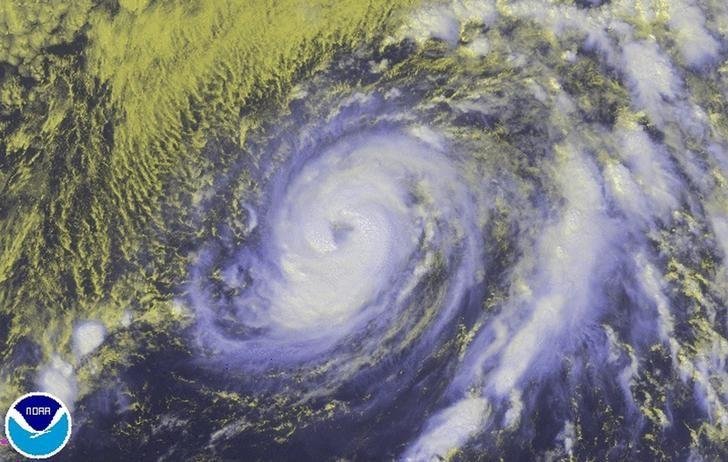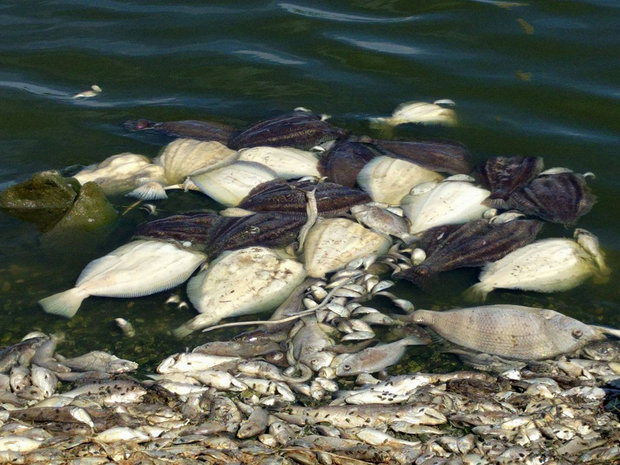
© USGS Hawaiian Volcano ObservatoryAn image from the rim of Halema‘uma‘u Crater on Tuesday.
Kilauea Volcano's summit lava lake rose to within 54 feet of the crater rim Tuesday under the watchful eyes of the USGS Hawaiian Volcano Observatory.
The lake level is reminiscent of spring 2015, when the lake eventually overflowed onto the floor of Halema'uma'u Crater, covering 28 acres in fresh lava.
"We haven't had an overflow since then," said HVO Scientist in Charge Tina Neal.
If there's a big rockfall from the side of the crater into the lake, and if winds happen to be coming from the south at that time, some ash could fall on visitors. But that shouldn't be terribly troubling, except to those with significant pre-existing respiratory problems, Neal said.
Why is this happening?
It's unclear why the lake is rising so much, Neal said.
"Over the long-term history of the lake, it's unusual — the only other time it got this high, it overflowed," she said.
What will happen at Pu'u 'O'o?
"If the lake is high, typically we've seen a variety of behaviors down at Pu'u 'O'o," Neal said.

© USGS Hawaiian Volcano ObservatoryThis photo captured from the rim of Halemaʻumaʻu Crater at the end of April 2015 shows the lava lake in the completely filled Overlook crater atop Kilauea Volcano. The lava lake is rising again.


Comment: Over the same weekend and a few miles to the south-west of the above location a similar event occurred: Thousands of dead fish found in Isle de Jean Charles, Louisiana